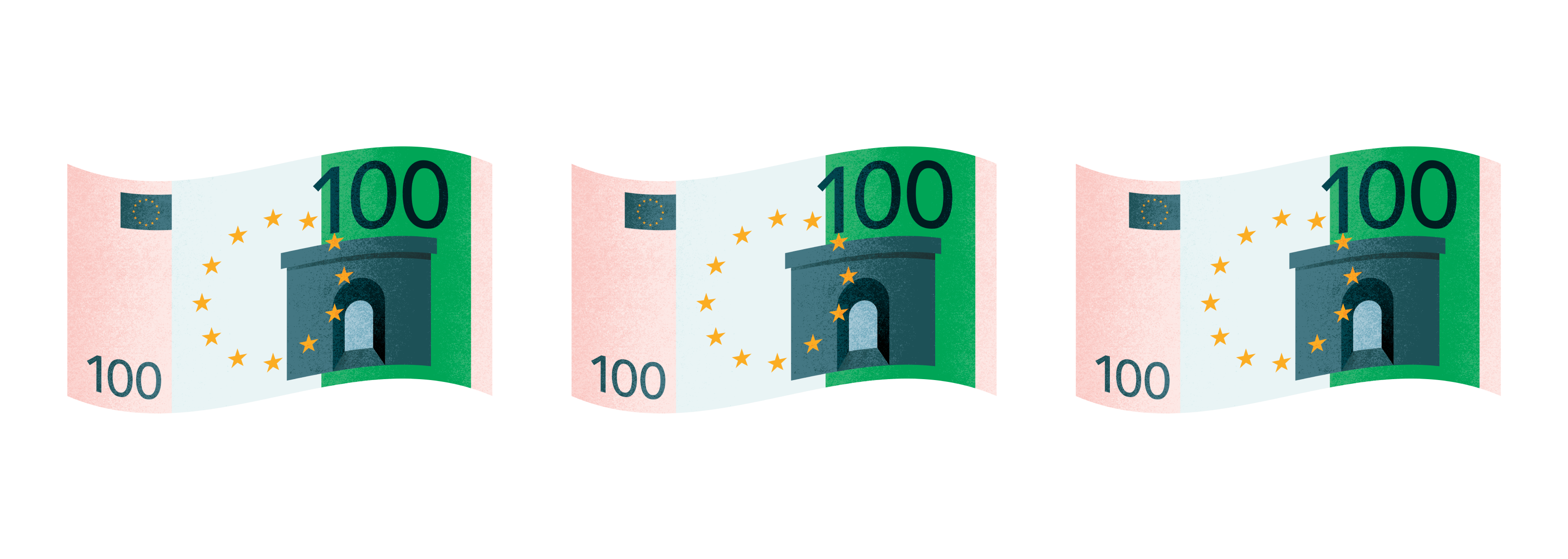2021
Survey Report
Open banking
investments and use cases
Following the money
We surveyed 308 financial executives in Europe to get a better understanding of how their open banking budgets are shaping up in 2021, and what use cases they are most likely to invest in.
Executive summary
We’ve been surveying financial executives across Europe yearly to get the pulse on open banking and understand how it’s impacting the industry. In this report, we explore how investments are shaping up and what use cases executives have in sight.
Here is the ‘too long; didn’t read’ version, if you’re just curious to know some of the top findings on the investments front:
- Across all segments of finance, the mean spending on open banking objectives in 2020 was €32 million.
- The spending was significantly higher for retail banks and wealth management firms – at a mean of €84 million and €79 million, respectively.
- The pandemic played havoc with budgets in 2020, and executives spent less than they’d initially budgeted. But this year, investor confidence is back up and open banking is high on the agenda.
- Although one third (30%) of executives say budgets declined in 2021, the largest chunk (46%) indicate that their budgets have grown year-on-year.
As to where the money might be going, financial executives have set their eyes on a broad set of open banking use cases:
- Payment initiation services comes out on top as the most important use case across all segments.
- Opportunities to improve the customer experience follow, with use cases related to financial management and onboarding.
- Risk-related use cases also rank high – especially for retail banks, credit institutions and mortgage providers who consider these ‘extremely important’.
- Differentiators and add-ons (such as subscription management, loyalty programmes, targeted advertising) rank lower on the list – although they are still important for a majority of respondents.
Open banking spending to drive new wave of value creation

While some financial institutions look to open banking as a compliance effort, others are leveraging it to enhance existing banking products and services. They are targeting opportunities to improve the value propositions in payments, retail banking, wealth management, insurance, investments and other segments of finance.
These developments are responsible for a new wave of value creation. Accenture Research estimates that the global open banking market could be worth as much as $416 billion for the financial services providers that succeed in creating value for their customers and partners.
This number, however, does not capture the total amount of spending on open banking objectives, which may include investments across IT, product, and third-party services.
In other words, the open banking total addressable market may be even bigger.
The results from our survey indicate that European financial institutions spent a mean of €32.1 million on their open banking objectives in 2020. You can check the full breakdown in the chart.
Open banking spending in 2020 (€M)
Q. How much has your organisation spent on its open banking objectives in 2020?
Want more insights on what could explain the difference between segments? Download full report for a deeper dive into the results.
The big open banking budget shake up
23%
report a significant impact on open banking budgets
The survey data suggests there’s a disconnect between the open banking budgets allocated in 2020 versus the true spending in 2020.
Nearly a quarter (23.4%) of financial executives report the pandemic had a significant impact on their open banking budgets. Over half (54.9%) say it had a moderate impact, and just one-fifth (21.7%) say it had a low to no impact on budgets.
Although open banking budgets were impacted, confidence appears to be back up. Survey results also show budgets are growing again (albeit not as much as in previous years). This year, 46.8% of financial executives indicate that the budgets have increased. In contrast, 29.9% say their budgets declined.

Change in open banking budgets in 2021
Q. How has the open banking budget changed in 2021?

A breakdown of budget developments by segment provides a deeper insight into how different markets are responding to the challenges of the pandemic and the open banking opportunity.
Segments with highest increase in open banking budgets
#1 Wealth management firms #2 Wholesale banks #3 Credit providers
For a detailed view of the results by segment, and an overview of what executives expect in terms of a payback period – check the full report.Where’s the money going?

Open banking, together with the ongoing digital transformation of the industry and the unbundling of financial services, presents opportunities for financial institutions to redesign business models, propose revenue sharing propositions, and drastically improve processes.
But what exactly are the objectives they are most keen to explore? Based on how respondents ranked their importance, the open banking use cases that are top of mind can be grouped in four categories:
#1 Payment initiation services #2 Improving the customer experience #3 Optimising risk models #4 Differentiators and ‘add-ons’
Enhanced banking use cases
Q. How important are the following open banking use cases for your business? (Based on a scale. Chart shows percentage of respondents selecting 'Very important' and 'Extremely important')
For a closer look at each of these use cases, how institutions can benefit from them, and how priorities vary across particular segments – check the full report.
Every company has the potential to become a financial services company

Although some of these open banking use cases may be familiar to financial institutions, they are increasingly being adopted by other industries as well.
As open banking matures, more businesses will be able to offer embedded financial services.
This means that financial incumbents will be challenged to keep up with the pace of innovation and forced to fence off new generations of market entrants.
One of the key trends in the transition towards an open banking ecosystem is the blurring of boundaries between industries. Although finance has always been the bedrock upon which many businesses operate, it’s becoming increasingly embedded into the services that consumers and businesses enjoy every day.
There are already plenty of existing examples of non-financial institutions moving across industries. Online and physical retailers (Tesco, Walmart, Amazon), hotel chains (Hilton, Marriott, Best Western), and telcos (Orange, Vodafone, Telefonica) have moved into the realm of banking, seeking opportunities to create loyalty programmes, offer financing, and improve customer experiences with embedded finance.
Why does this matter? We believe financial institutions need to be on their toes and should not lay down innovation budgets, as they should continue to focus on creating improved digital services for their customers.

Featured interviews and tips for getting ahead
Besides a deeper exploration of the results and the state of the industry, the full report also includes additional interviews with three hands-on executives at the forefront of digital innovation. They are:‘We estimate that in 2030 up to 50% of the profits we generate will come from new or not yet invented services or products.’

Who he is:
As SEB’s Head of Exploratory Banking & Strategic Partnerships, Stefan Stignäs is responsible for translating the bank’s 2030 vision into practical outcomes.What he’s known for:
Stefan is a no-nonsense kind of guy. He’s a doer with a deep interest in people and performance management.Why we spoke to him:
With a 2030 vision, Stefan is responsible for launching and running the initiatives that will define SEB’s new way of banking which, in one word, is all about data.‘Every day I speak with people across the organisation to educate them on how they can benefit from APIs.’

Who he is:
Koen Adolfs is the Lead Product Owner for Open Banking & Enterprise Integration Technology at ABN AMRO. You could say he’s the API shopkeeper who’s helping the bank innovate inside-out.What he’s known for:
Koen is known as the in-house innovation evangelist who has brought a rush of enthusiasm for open banking and API development across the ABN AMRO organisation.Why we spoke to him:
Koen knows everything there is to know about APIs and creating value for different lines of business using technologies.‘I believe open banking, and open finance, are going to be supporting nearly all financial innovation over the coming decade.’

Who he is:
Bruno Cambounet is the Head of Research at Sopra Banking Software and Co-Chair of the openFinance Advisory Board at The Berlin Group.What he’s known for:
Bruno is a passionate engineer and seasoned banking technology specialist. He’s been a champion for open banking for many years, and started talking about it long before the introduction of PSD2.Why we spoke to him:
Not only does Bruno understand the opportunities and challenges for his customers, he’s also helping pave the future for open banking through his work at The Berlin Group.You can read the full interviews to see what they had to say and learn more from their unique perspectives in the PDF version of the report.
The downloadable version also includes our own tips for steps organisation can take to stay on top of the game.
About this research
For the third year in a row, Tink enlisted the help of independent market research organisation YouGov to conduct a wide-ranging survey on the attitudes and opinions towards open banking in Europe.
For more details on the methodology and the demographics, check the full report.
This is the third (and final) report based on the findings from our 2021 survey. The first one explores the role of open banking in the post-pandemic world. The second looks at the perceived impact of open banking and emerging archetypes. You can find them here.
We plan to keep tracking the progress of open banking in Europe, so stay tuned for fresh insights coming your way in 2022.
If you want to throw yourself further into the world of open banking, go to our resources page for all our past reports, handy guides and other reading materials:
tink.com/resources